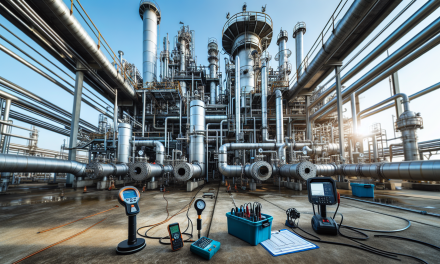Table of Contents
- Introduction
- Understanding Fluid Machinery
- Types of Fluid Machinery
- Selection Criteria for Fluid Machinery
- Operation and Maintenance of Fluid Machinery
- Common Issues and Solutions
- The Importance of Training
- FAQs
- Conclusion
Introduction
Fluid machinery plays a pivotal role in various industrial processes. From moving water in hydraulic systems to compressing gases and generating energy, it serves multiple functions across diverse sectors. This blog explores the intricacies of selecting, operating, and maintaining pumps, compressors, and turbines.
Understanding Fluid Machinery
Fluid machinery refers to mechanical devices that transfer energy from one form to another through the movement of fluids. Whether utilizing liquids or gases, these machines convert mechanical energy to fluid energy or vice versa. Consequently, they contribute significantly to both efficiency and productivity in industrial contexts.
Importance of Fluid Machinery
Furthermore, fluid machinery not only enhances operational efficiency but also reduces energy consumption. In addition, proper application of these machines helps in achieving optimal performance and long-term sustainability in operations. Thus, understanding their functionalities, parameters, and operational nuances is essential.
Types of Fluid Machinery
Fluid machinery primarily consists of pumps, compressors, and turbines. Let’s delve into each category, exploring their functions, types, and applications.
Pumps
Pumps are mechanical devices that move fluids by mechanical action. They play a critical role in various applications, such as water supply, sewage treatment, and industrial processes. Two main types of pumps exist: positive displacement pumps and centrifugal pumps.
Positive Displacement Pumps
Positive displacement pumps work by trapping a fixed amount of fluid and forcing it into the discharge pipe. These pumps are highly effective for applications requiring high pressure. Some common types include gear pumps and diaphragm pumps.
Centrifugal Pumps
On the other hand, centrifugal pumps use rotational energy to move fluid. The impeller spins, creating a low-pressure area that draws fluid into the pump. This type is widely used due to its simplicity and efficiency.
Compressors
Compressors are devices that increase the pressure of a gas by reducing its volume. They are essential in many industries, including HVAC, refrigeration, and gas processing. Like pumps, compressors also come in various types.
Reciprocating Compressors
Reciprocating compressors use pistons driven by a crankshaft. These compressors deliver high pressure and find use in applications requiring significant compression.
Screw Compressors
Screw compressors utilize two meshing helical screws to compress gas. They offer higher efficiency and continuous operation, making them suitable for many industrial processes.
Turbines
Turbines convert fluid energy into mechanical energy. These machines are typically used for generating power from steam, water, or gas. Different types of turbines exist, depending on their use.
Steam Turbines
Steam turbines operate on the principle of converting steam energy into mechanical work. They are commonly found in power plants and contribute significantly to electricity generation.
Gas Turbines
Gas turbines work by combusting gas to produce hot gases that spin the turbine, generating power. They are widely used in both power plants and aircraft engines.
Selection Criteria for Fluid Machinery
Choosing the right fluid machinery involves careful consideration of various factors. Following some essential guidelines will enhance decision-making.
Performance Requirements
First and foremost, clearly define the performance requirements. For instance, consider the flow rate, pressure, and temperature for pumps and compressors. Similarly, for turbines, evaluate the type of fluid and operational conditions.
Energy Efficiency
Next, prioritize energy efficiency. Select machinery that maximizes output while minimizing energy consumption. This selection not only reduces operational costs but also contributes to sustainability.
Maintenance and Reliability
Additionally, consider maintenance needs. Choosing equipment that requires minimal upkeep reduces downtime and operational disruptions. As a result, this factor significantly influences long-term productivity.
Cost Considerations
Lastly, evaluate the overall cost. While price is important, also consider lifecycle costs including installation, maintenance, and energy expenses. Often, investing in high-quality machinery pays off in the long run.
Operation and Maintenance of Fluid Machinery
Effective operation and maintenance ensure the longevity and efficiency of fluid machinery. Employing best practices minimizes the risk of breakdowns and enhances productivity.
Operational Guidelines
- Regularly monitor operational parameters.
- Establish standard operating procedures (SOPs).
- Train personnel on proper machinery usage.
- Document all operational data for further analysis.
Maintenance Best Practices
Regular maintenance is crucial for optimal performance. Implement the following best practices:
- Schedule routine inspections and maintenance checks.
- Utilize predictive maintenance strategies whenever possible.
- Train staff to identify symptoms of potential failures early.
- Keep a comprehensive log of maintenance activities.
You can further enhance your knowledge by attending events like the Fluid Machinery Conference: Pumps, Compressors & Turbines Mastery, where industry experts share insights and practical experiences.
Common Issues and Solutions
Every piece of machinery is prone to specific challenges. Understanding these common issues, along with their potential solutions, equips you to tackle problems effectively.
Pumps
- Issue: Cavitation. Solution: Maintain proper NPSH (Net Positive Suction Head) levels.
- Issue: Leaking seals. Solution: Regularly inspect seals and replace them as needed.
Compressors
- Issue: Overheating. Solution: Ensure proper lubrication and adequate cooling.
- Issue: Vibration. Solution: Balance rotors and check for alignment.
Turbines
- Issue: Reduced efficiency. Solution: Regularly clean turbine blades and monitor inlet conditions.
- Issue: Mechanical wear. Solution: Perform routine inspections and replace worn components.
The Importance of Training
Training plays a crucial role in enhancing the knowledge and skills of personnel handling fluid machinery. Comprehensive training programs equip individuals with the necessary skills to excel in their roles.
Industry conferences, such as the Essential Insights into the Process Plant Start-Up and Commissioning Training Conference, provide vital information and networking opportunities for professionals.
Benefits of Training
- Improved skill sets lead to increased productivity.
- Trained personnel can better identify and resolve issues.
- Contributes to a safer working environment.
Continuous Education
Moreover, continuous education ensures that staff stay updated with the latest trends and technologies in fluid machinery. Organizations can benefit from resources like Master the Art of Negotiating and Drafting Contracts: A Comprehensive Training Seminar to stay ahead of the competition.
FAQs
What is fluid machinery?
Fluid machinery includes devices that transfer energy between fluids and mechanical systems, such as pumps, compressors, and turbines.
How do I select the right pump for my application?
Choosing the right pump hinges on considering factors like flow rate, pressure requirements, and fluid characteristics.
What are common maintenance practices for compressors?
Regular inspections, lubrication, and monitoring operational parameters are essential maintenance practices for compressors.
How can I enhance my understanding of fluid machinery?
Attending industry conferences, such as Enhancing Service Quality and Elevating Customer Satisfaction Seminar, helps broaden knowledge and connect with peers.
Conclusion
Fluid machinery, including pumps, compressors, and turbines, is integral to many industrial processes. Understanding their selection, operation, and maintenance is crucial for optimizing efficiency and minimizing downtime. Through effective practices, ongoing training, and awareness of common challenges, organizations can significantly improve their operational success.
Ultimately, investing in fluid machinery and ensuring proper management enhances production capabilities and paves the way for sustainable growth.
To further enhance your prowess in fluid machinery, explore related materials such as Navigating the Dynamics of Service Quality and Customer Satisfaction. Continuous improvement and learning will always pay off.




